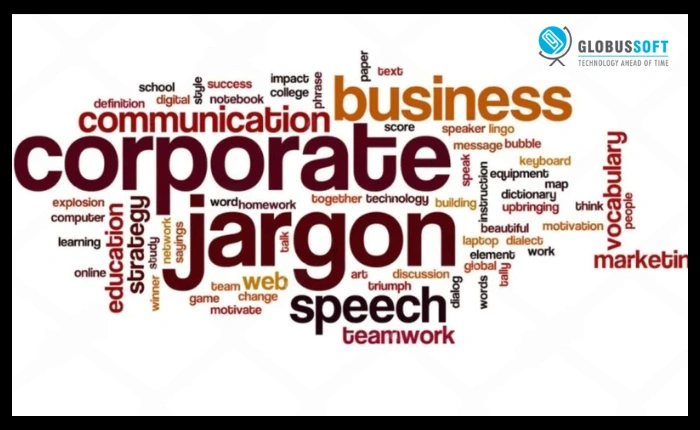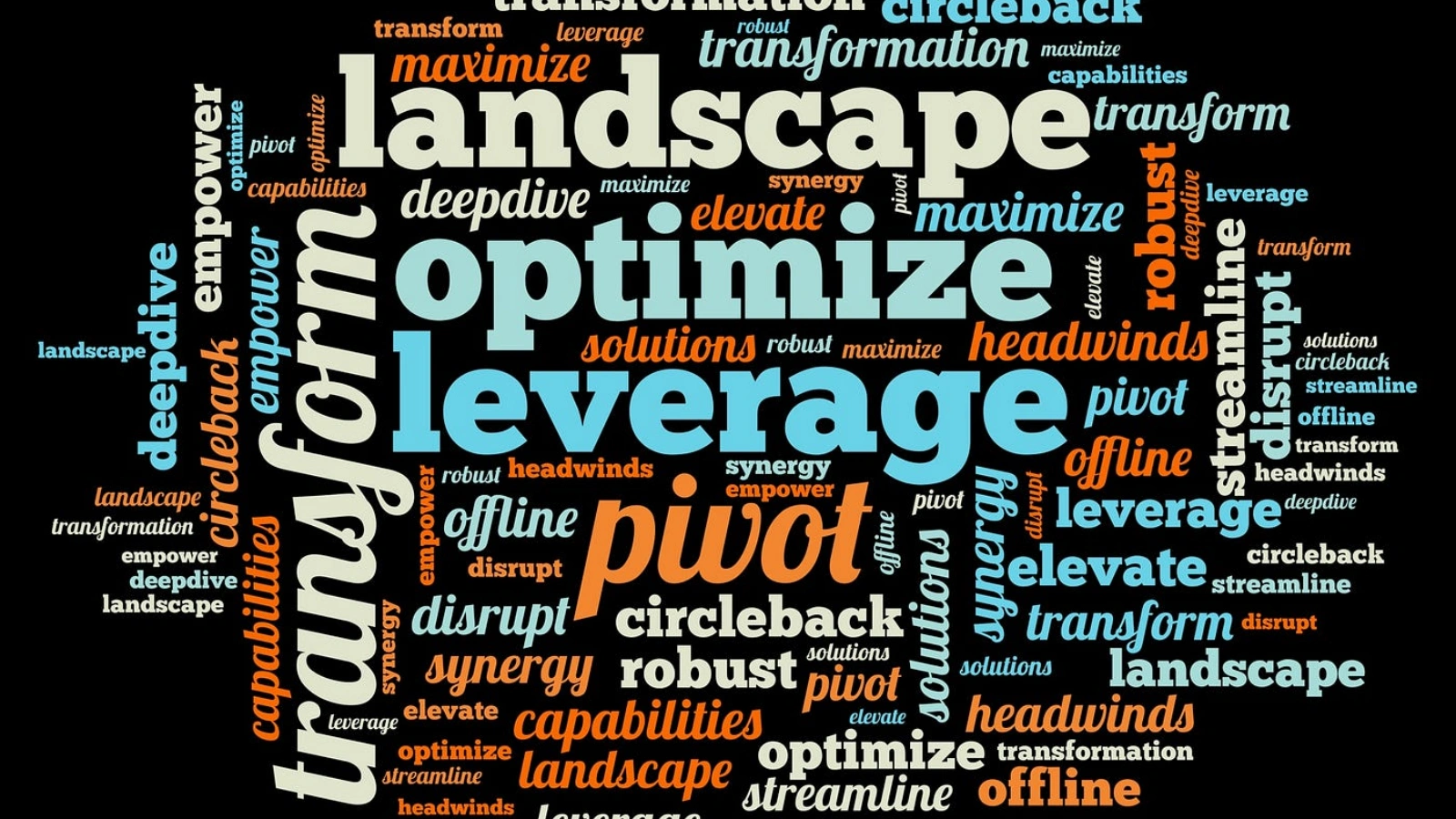
Workplaces thrive on communication, collaboration, and clarity, but Corporate Jargons often make conversations confusing for many professionals. Many employees still struggle to decode unfamiliar phrases and overly complex expressions used in meetings, emails, reports, and presentations. These specialized terms are industry-specific language used to simplify and compress concepts.
Sometimes, they convey ideas faster. Other times, they confuse employees and create unnecessary communication barriers. Understanding how to use corporate jargons strategically can boost confidence, build credibility, and strengthen workplace relationships.
This comprehensive guide explores why corporate jargons exist, when to use them, when to avoid them, and how AI-driven approaches are shaping the future of communication inside modern organizations.
Hit ‘Play’ Button & Tune Into The Blog!
What Are Corporate Jargons?
Corporate jargons are phrases, abbreviations, buzzwords, and expressions used within professional circles. They often reference business operations, strategy, and performance.
Examples include:
- Value proposition
- Deliverables
- Actionable insights
- Stakeholder alignment
- Core competency
To insiders, these sound normal. For newcomers, they may feel intimidated.
Why Corporate Jargons Exist?
There are several reasons why organizations continue to embrace specialized language:
1. Efficiency:
Corporate environments value speed. Instead of explaining a detailed process or strategy in multiple sentences, employees rely on a single term that everyone understands. For example, terms used in Customer Relationship Management (CRM)—like “lead nurturing,” “conversion funnel,” or “churn rate”—allow teams to quickly communicate complex processes without lengthy explanations. This helps save time in meetings, documentation, and day-to-day communication.
2. Identity:
Using corporate jargon creates a shared vocabulary among teams. It helps employees feel aligned with company culture, signals expertise, and builds a sense of inclusion. Knowing these terms often shows confidence and industry maturity.
3. Precision:
Some workplace concepts are too broad when described casually. Jargons offer more accurate wording, ensuring there’s no confusion or room for misinterpretation especially in technical, financial, and strategic discussions.
4. Culture:
Fast-paced organizations constantly evolve. As new processes, tools, and trends emerge, so do new expressions. Over time, teams become fluent in internal phrases, creating a language that reflects the company’s working style and values.
Also Read:
How To Master Customer Relationship Management ?
When Corporate Jargons Become A Challenge?
While corporate jargons offer speed and precision, it can also create communication gaps when used without context. Overusing complex terms often leads to misunderstandings, slows down onboarding, and can even make workplace conversations feel intimidating.
- Confusion: New employees may not understand the meaning.
- Impression Management: People sometimes hide vague ideas behind fancy terms.
- Exclusion: Non-native speakers often struggle with heavy jargon environments.
Great communication balances clarity and intelligence.
Corporate Jargon Across Different Departments
Every department develops its own set of commonly used terms.
Marketing:
- Brand equity
KPI- Conversion funnel
Finance:
- EBITDA
- Burn rate
- Cashflow runway
Human Resource:
- Upskilling
- Culture fit
- Retention analytics
IT:
- Deployment pipeline
- Virtualization
- Scalability
These vocabulary differences create communication diversity.
How New Employees Handle Corporate And Tech Jargons?
Stepping into a new workplace can feel overwhelming when unfamiliar corporate or tech jargons are constantly used. However, with the right approach, employees can gradually become fluent and confident in understanding and applying these terms.
Asking Questions:
Never hesitate to ask for clarification when you hear a new term. Asking early prevents misunderstandings, helps you learn faster, and shows a genuine interest in understanding workplace culture.
Observing How Others Use the Term:
Pay attention to how experienced colleagues apply certain phrases in conversations, emails, and meetings. Context reveals meaning, tone, and when it’s appropriate to use specific jargons.
Keeping a Vocabulary Journal:
Create a personal list of new phrases with definitions and examples. Reviewing this regularly helps you remember and eventually use those terms naturally in conversations.
Reviewing Context:
Sometimes jargons change meaning based on department, project, or audience. Reflect on where and how the term appears, in presentations, reports, or casual chats, to grasp its true purpose.
Growth takes time. With consistent exposure and curiosity, even the most complex workplace language becomes manageable.
Common Corporate Jargons New Employees Must Learn
For new employees, understanding commonly used corporate jargons is crucial to navigating meetings, emails, and collaborative projects confidently. Familiarity with these terms accelerates onboarding, improves communication, and helps build credibility in a professional environment.
Key corporate jargons to focus on include:
Milestone Deliverables:
Specific outputs or project goals that mark significant progress points. Understanding these helps employees track progress and align their contributions with broader objectives.
Roadmap Alignment:
Ensuring that individual or team tasks are in sync with the company’s strategic plans. Grasping this concept allows employees to prioritize work effectively.
Organizational Synergy:
The collaboration between teams, departments, or functions to maximize efficiency and outcomes. Recognizing this term encourages cross-functional cooperation.
Value Stream Optimization:
Improving processes that deliver value to customers by reducing waste and increasing efficiency. Awareness of this helps employees contribute to meaningful business improvements.
Professionals in large organizations frequently encounter these terms, and early familiarity can make the transition smoother, enhance participation in discussions, and boost confidence when engaging with colleagues and stakeholders.
How Is Technology Fueling The Rise Of Corporate And IT Jargons Today?
Technology evolves faster than traditional workplace vocabulary, introducing new expressions into product roadmaps, development sprints, and integration discussions. Engineering and IT teams often rely on acronyms and technical terms to simplify complex processes, but this can overwhelm employees who aren’t deeply involved in technical work.
As a result, IT jargons have become a major part of corporate communication, creating both efficiency and potential confusion.
As digital transformation accelerates, cloud concepts, automation workflows, API integrations, and AI logic create communication friction across departments. This growing language gap can slow collaboration, decision-making, and onboarding.
To address this challenge, AI-driven IT platforms like GlobussoftAI are emerging as powerful platform to manage complex corporate and technical language. These platforms combine multiple intelligent software systems that automate interpretation, simplify dashboards, and convert technical workflows into actionable, user-friendly formats.
By leveraging automation and contextual analysis, they help teams navigate jargon-heavy documentation, integration scripts, and process pipelines efficiently.
Organizations adopting such platforms can reduce communication friction, accelerate decision-making, and maintain operational clarity even as corporate jargons evolve rapidly.
How To Use Corporate Jargons Wisely?
Corporate jargons can strengthen communication when used correctly, but they can also create confusion when applied carelessly.
These guidelines help you strike the right balance:
Know the Audience:
Before using jargon, consider who you’re speaking to. Team members from other departments, new employees, or clients may not be familiar with internal terminology. If the listener doesn’t understand, simplify your language to maintain clarity and avoid misunderstandings.
Avoid Overuse:
While jargon may sound impressive, excessive usage can clutter communication and reduce meaning. Use these terms only when they genuinely add value or shorten long explanations don’t decorate sentences just to sound more professional.
Provide Context:
When introducing new or department-specific terms, offer a simple explanation or example. This helps others learn faster, ensures everyone stays aligned, and prevents confusion during discussions or collaboration.
Prioritize Clarity Over Complexity:
Always remember: communication exists to convey ideas, not to complicate them. Clear, straightforward language is often more impactful than complex expressions, especially when decision-making and deadlines are involved.
Using corporate jargon responsibly improves teamwork, builds trust, and strengthens workplace communication. Let me know if you’d like a few examples added!
How Is Globussoft Simplifying Corporate Jargons Through AI-Driven Innovation?
With workplace language increasingly saturated with technical terms, acronyms, and fast-evolving digital concepts, understanding communication can be a challenge. Globussoft provides automated solutions that process complex terminologies and technical data across dashboards, documentation, and workflow systems.
Rather than teaching employees, these platforms automate the handling of jargon, presenting information in intuitive, actionable formats that any team can work with.
These platforms support:
- Reduced Communication Friction – Automated processing of complex expressions ensures teams spend less time deciphering technical language.
- Sharper Operational Visibility – Critical information is simplified into intuitive, dashboard-ready formats for faster comprehension.
- Cross-Functional Transparency – Diverse departments can access equal understanding of key processes and terminologies.
- Better Onboarding & Adoption – New team members navigate complex workflows faster through automated contextual explanations.
AI-driven platforms also streamline IT-focused language found in automation scripts, cloud logic, and integration pipelines. By converting complexity into clarity, these platforms enable organizations to operate efficiently, collaborate seamlessly, and stay agile in an environment where business jargons and technical expressions evolve daily.
In short, platforms like these transform how businesses manage, automate, and interpret complex IT and corporate language, making operations clear, strategic, and future-ready.
How Do Corporate Jargons Impact Employee Engagement In The Workplace?
Corporate jargons significantly influence how employees interact, collaborate, and connect within an organization. When used effectively, they can unify teams by creating a shared language that builds confidence, speeds up communication, and strengthens cultural identity.
For instance, discussions around AI technology trends often involve specialized terms like “machine learning pipelines,” “predictive analytics,” or “natural language processing.” Clear explanations of such terminology help employees feel included, even if they are not technical experts.
However, excessive or poorly used jargon can have the opposite effect. Overly complex phrases may confuse team members, discourage participation, and create unnecessary communication barriers.
This often results in misunderstandings, slower decision-making, and disengagement, especially among new hires or non-technical employees.
When used thoughtfully, corporate jargons can:
- Increase clarity during strategic discussions
- Strengthen departmental alignment
- Improve communication efficiency
When misused, they can:
- Reduce transparency
- Cause communication anxiety
- Exclude certain employees unintentionally
Ultimately, employee engagement thrives when language is clear, inclusive, and purposeful, ensuring every voice feels understood and valued.
How Do Business Lingo Phrases Improve Workflow Communication?
Teams often rely on specific business lingo phrases to communicate quickly and effectively. These phrases help condense complex ideas into simple terms, keeping workflows smooth. Their benefits include:
- Conveying urgency and priority – phrases like “ASAP” or “high-priority” signal what needs immediate attention.
- Streamlining follow-ups – terms like “circling back” or “touching base” reduce the need for long explanations.
- Clarifying action plans – concise phrases help everyone understand next steps and responsibilities.
- Improving team alignment – when all team members know the terminology, collaboration becomes faster and more efficient.
Overuse or unfamiliar lingo can confuse new employees or cross-department teams. Balance shorthand with context to ensure clarity and maintain smooth communication.
Also Read:
How AI Technology Trends Are Powering Business Growth?
Real-World Scenarios Of Corporate Jargons
Corporate jargons are used daily across teams to communicate ideas quickly, often replacing longer explanations with concise expressions. Here are some common business jargons examples and how they are applied:
- “Double-click on that data point” – Encourages a deeper analysis of a specific metric or insight without going into detailed instructions.
- “Align cross-functionally” – Signals collaboration across different departments to ensure everyone is on the same page regarding a project or initiative.
- “Drive stakeholder adoption” – Refers to encouraging clients, users, or internal teams to embrace a process, tool, or strategy.
- “Expand vertical pipeline” – Indicates growing opportunities or leads within a specific business segment or market vertical.
These phrases compress complex strategies into short, actionable statements, saving time during meetings or emails. However, their effectiveness depends on team members understanding the meaning behind them.
Used thoughtfully, corporate jargons make workplace communication more efficient, but overuse or misuse can create confusion, especially for newcomers or cross-department teams.
What Does The Future Hold For Corporate Jargons In Modern Workplaces?
Corporate jargons are constantly evolving, influenced by technological advancements, remote work trends, and changing organizational structures. As businesses adopt automation, AI-driven tools, and digital collaboration platforms, new terms and phrases are introduced to describe processes, tools, and strategies.
Key trends shaping the future of corporate jargons include:
Automation-Centric Terminology:
Words and acronyms related to workflow automation, process optimization, and intelligent systems will become common in everyday communication.
AI-Based Vocabulary:
As AI tools become integral, terms describing algorithms, machine learning models, predictive analytics, and data-driven decision-making will enter corporate lexicons.
Remote Work Communication Phrases:
Phrases related to virtual collaboration, hybrid meetings, asynchronous communication, and digital project management will continue to grow.
The pace of language evolution is closely tied to technological progress. Organizations that stay ahead by educating employees on emerging jargons and providing contextual clarity will foster better collaboration, innovation, and engagement.
Final Thoughts
Corporate jargons are now a common part of workplace conversations, helping professionals communicate complex ideas quickly. When used with purpose and awareness, they can enhance collaboration and create alignment across departments. But when people depend on them too heavily, they can confuse colleagues and make simple messages harder to understand.
As businesses move toward smarter technology, at Globussoft, we are simplifying communication and helping teams operate with more clarity. Instead of removing jargon, the focus should be on using it responsibly and prioritizing clear, meaningful language that strengthens professional relationships and improves productivity.
FAQs
1. How can employees improve communication when unfamiliar terms are used at work?
Employees can ask for clarification politely, take notes, and research new terminology after meetings. Building a small reference glossary also helps strengthen long-term understanding.
2. Why do different industries develop unique language styles?
Every industry evolves specialized language to discuss processes, tools, and tasks more efficiently. These unique terms help professionals communicate complex ideas quickly.
3. Are there risks to overusing niche terminology in workplace conversations?
Yes. Excessive dependence on complicated terms can disconnect colleagues, confuse clients, and slow project clarity. It’s better to balance natural conversation with occasional use of corporate jargon when needed.








